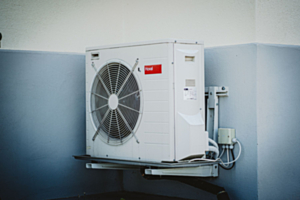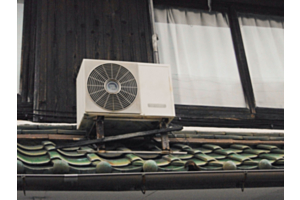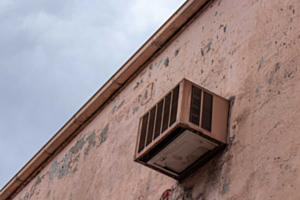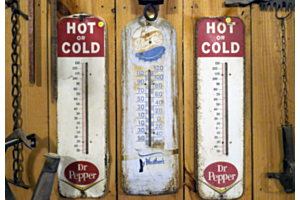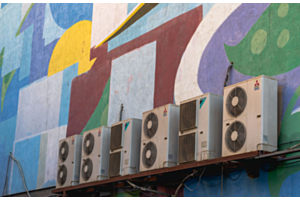Blog
-
April 18, 2023
When the last wisps of autumn vanish and winter makes its debut, you largely hide away inside. You don’t have to worry about maintaining the lawn this time of year or raking up leaves. What about your ductless mini split? Do you need to cover that, or is it okay to leave it exposed for the winter?
While you don’t have to cover your mini split, per se, it’s for the unit’s longevity that you do.
A mini split cover for the exterior compressor will protect it from the elements. Even though you should have gotten the compressor installed with some degree of overhead cover, that doesn’t mean snow can’t fall atop it or blow in from the sides.
Snow can potentially seep into the compressor depending on the unit’s design. That can affect how the coolant in the compressor functions, which means you might experience fluctuations in your mini split’s performance.
Even with a cover, snow can still accumulate atop the compressor, but there’s less risk of the snow
-
April 11, 2023
You’re displeased with your current heating and cooling system. It’s old, inefficient, barely keeps the house at the right temperature, and you spend so much money on your utility bills every month.
However, the thought of adding ductwork gives you conniptions. What are your options?
If you want to heat and cool your home without installing any additional plumbing or ductwork, you need a ductless mini split system.
As the name suggests, a mini split system uses no ductwork whatsoever. The installation process is exceedingly simple, as a mini split system requires few components.
Outdoors, a compressor connects via copper wire to one or more indoor air-handling units. The compressor is a small unit, much more so than a central air conditioner, and goes on a concrete slab. The indoor units are smaller still, and you can get them installed in many places in a room, such as lower near the floor or higher by the ceiling.
The copper wire between the two
-
April 04, 2023
Whether you’ve moved into a starter home you know you someday want to sell, or you’re a long-term homeowner obsessed with the small details, home value drives a lot of an average homeowner’s decisions.
Should you get an in-ground pool installed in the backyard? Is it really going to be such a big deal if you cut down that tree in the front yard? What about if you expand the house?
Even smaller household changes can influence your property’s curb appeal. That has you wondering, should you switch out your traditional HVAC units and upgrade to a ductless mini split instead? Will that devalue your home or increase its value?
A ductless mini split system will improve your home’s curb appeal. Here’s why.
Better Energy Efficiency
Energy efficiency is a top priority for everyone nowadays as we all try to do our part for a healthier, longer-lasting planet. A homebuyer who sees your mini split system versus
-
March 28, 2023
HVAC technology sure has come a long way. Through all the strides, it’s more energy efficient than it has been but still not as eco-friendly as other heating and cooling solutions such as ductless mini split systems.
Energy efficiency must matter to you as a consumer. A greener heating and cooling setup needs less power to run, which reduces your carbon footprint. As an added bonus, you can save a lot of money.
Just how much cash can you put back in your pocket by switching to a ductless mini split system from traditional HVAC? That’s exactly what we’ll explore in this post.
Traditional HVAC Costs
Let’s begin by investigating the costs of traditional HVAC, such as a furnace or air conditioner.
For example, you bought a new AC. Its capacity is 20,000 British thermal units, which is standard for a residential central AC unit.
-
March 21, 2023
Ductless mini split systems can heat or cool a space without using too much energy, making them a desirable alternative to standard HVAC. You’re eagerly soaking up as much information about mini splits as you can before you buy one, and you’re wondering if they require a heat pump. Do they need one?
Let’s answer that question in today’s post!
What Is a Heat Pump, Anyway?
A heat pump is a type of heater that sends thermal energy from outdoors inside a building or home via refrigerant. As the name suggests, heat pumps move heat, but don’t generate it themselves.
Instead, the heat pump relies on electricity to warm the components so the pump can then move the heat. The reduced reliance on fuel makes a heat pump an eco-friendly solution for heating indoor environments.
Heat pumps are also energy efficient since they use
-
March 14, 2023
After yet another frustrating furnace breakdown, you’re ready to say goodbye to your traditional HVAC for good. You’ve heard great things about mini split heat pumps, and while you’re interested, you haven’t entirely made up your mind yet.
Before you can, you must know how much money you can save if you invest in a mini split heat pump. Allow us to answer that question for you today.
We’ll use examples throughout this post, so while these are figures you can aspire to, they’re not necessarily the precise savings you’ll experience with a ductless mini split heat pump.
Okay, so let’s set up the example. You bought a mini split heat pump that operates at 24,000 British thermal units. It has a seasonal energy efficiency ratio or SEER rating of 18. In your neighborhood, you pay $0.132 per kilowatt-hour for electricity.
Your mini split heat pump costs $0.18 to run per
-
March 07, 2023
Ductless mini splits are efficiency powerhouses, but that doesn’t mean you can’t do more to enhance their efficiency. You might enjoy even more effective heating and cooling, so what kinds of changes can you make today?
Here’s what we recommend!
Watch How Much Light You Let In
Sunlight brightens our lives and our moods, as it contains vitamin D which makes us happier. However, sunlight is also warm, and too much of it can generate radiant heat in the house.
This makes your mini split have to work that much harder to keep indoor environments comfortable, especially in the summer.
No one’s saying you have to become a vampire and live in darkness but consider using blinds or curtains to reduce the amount of sunlight during the day.
Maintain Your Mini Splits
The best way to keep your
-
February 28, 2023
Who doesn’t love getting money back at tax time? You can spend your tax refund on that home improvement project you’ve put off or even something nice for yourself (you deserve to splurge from time to time, after all!).
You’re planning to install a ductless mini split system in your home soon, and you’d like to plan the work in such a way as to maximize your tax benefits. How do you do that?
Let’s explore!
Know Your Options
To recoup the costs of your mini split, the applicable HVAC tax credit you should look into is the Federal HVAC Tax Credit. It’s also sometimes referred to as the Non-Business Energy Property Tax.
Whatever you prefer to call it, this tax credit went into effect in 2020 alongside the Federal Energy Efficient Tax Credits.
These tax credits can shave dollars off your mini split installation
-
February 21, 2023
Choosing the appropriate size for a ductless mini split system has proven more difficult than you thought.
Is it okay if your mini split is a bit oversized or is it better to undersize it?
If you can’t buy a mini split that’s the appropriate size, a slightly oversized mini split is better than one that’s too small. Let’s explain why.
When you undersize your mini split, you limit its capacity. This hinders how much heating and cooling the unit can provide right out of the gate, which can leave you wanting more.
Once your undersized mini split is hooked up and operational, it works harder to provide any meaningful heating and cooling.
Again, the lack of efficiency can make you think you made a mistake choosing a mini split over standard HVAC when really, it’s that you went too small.
An oversized mini split has more than enough power. While you may wonder what this means from an energy efficiency standpoint, it’s not as bad as you might imagine.
-
February 14, 2023
You’ve always used traditional HVAC like air conditioning or furnace heating to keep your home comfortable. However, the costs have become increasingly exorbitant, so you’re thinking of exploring other options, such as a ductless mini split system.
Here are five reasons why that’s such a smart choice!
1. Appealing Design
The indoor air-handling units of a ductless mini split system are small and unobtrusive. They certainly blend in better with any home décor than a hulking window air conditioner or a space heater.
Most of the time, you won’t even notice they’re there!
2. More Flexible Installation
Installing a ductless mini split system is phenomenally easy.
It’s all the ductwork that makes traditional HVAC so complex. Once you cut out the ductwork, a team of technicians can set


